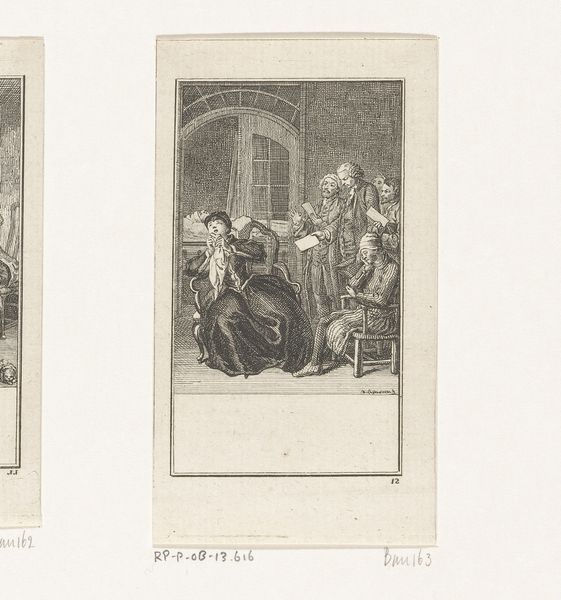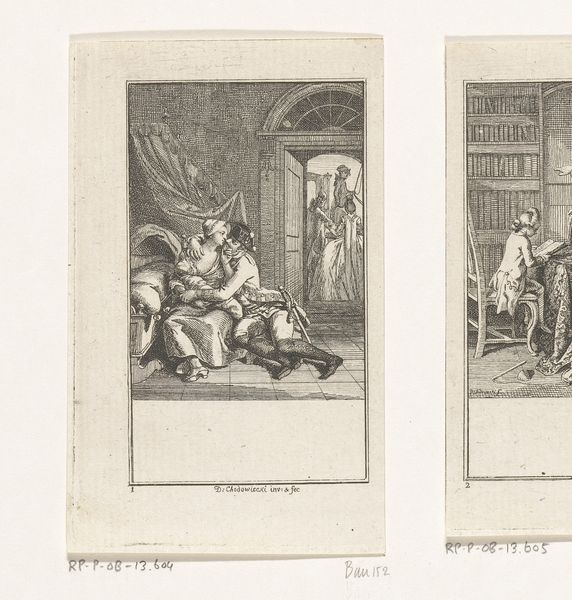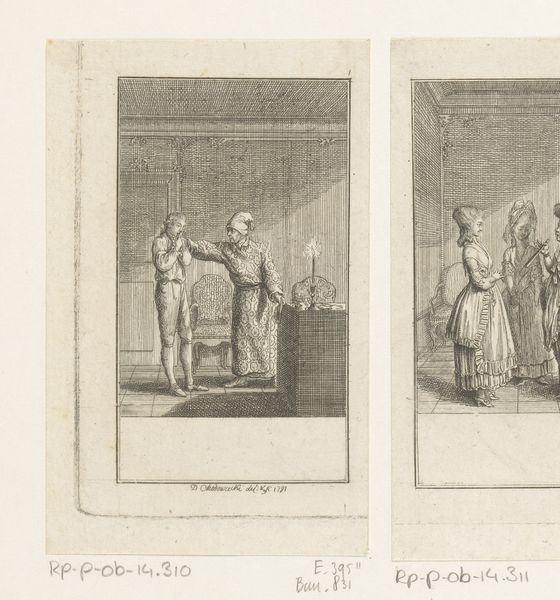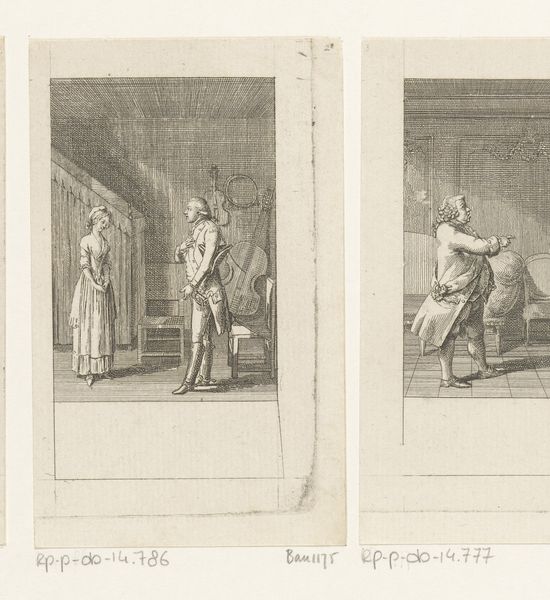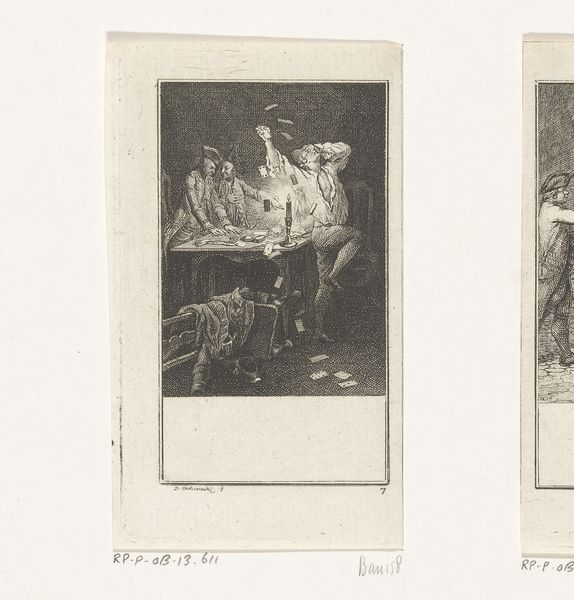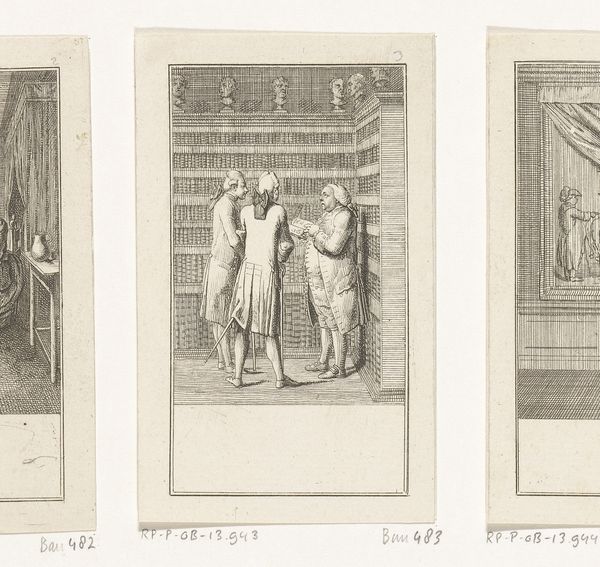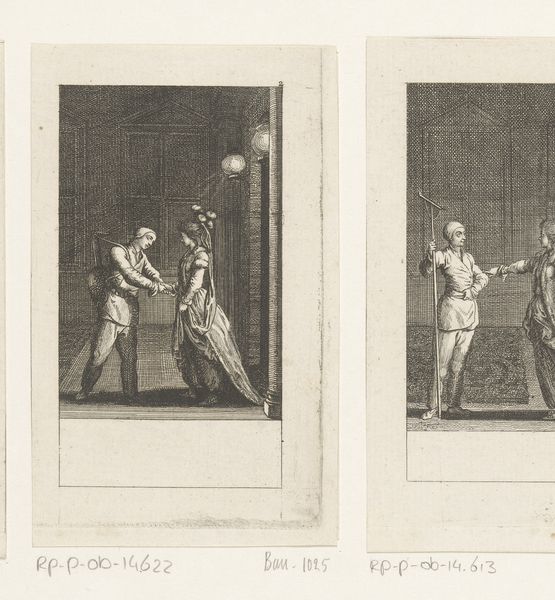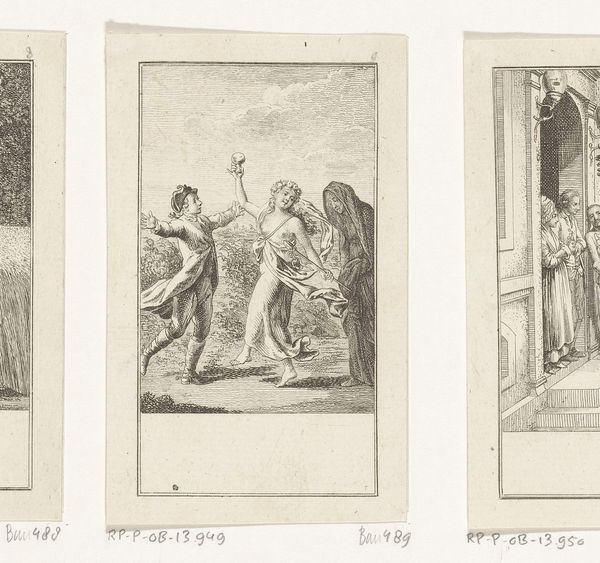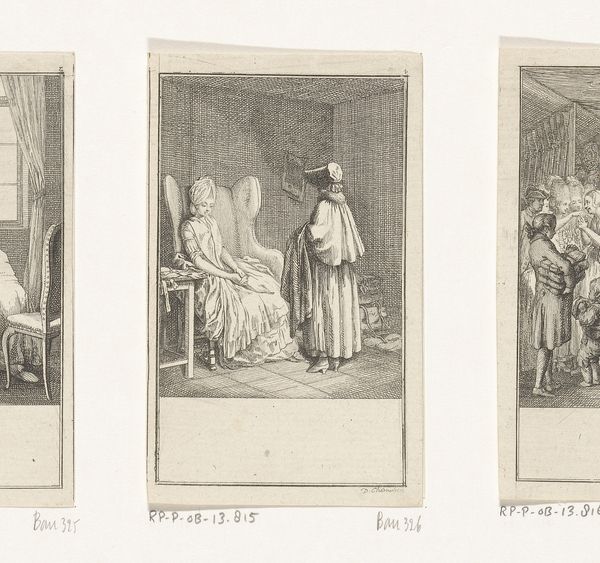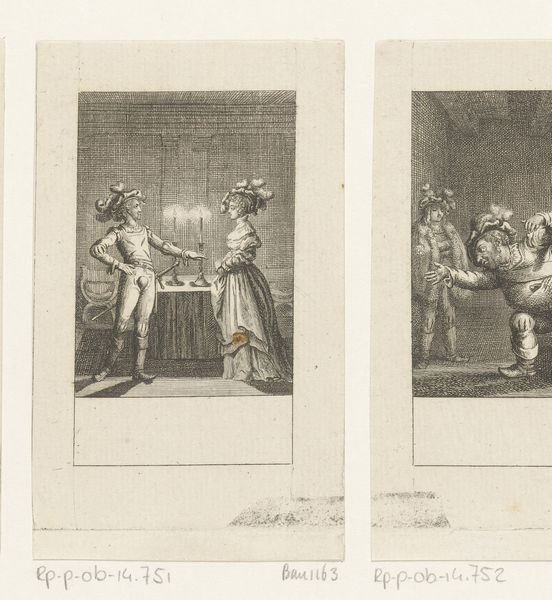
Dimensions: height 108 mm, width 59 mm
Copyright: Rijks Museum: Open Domain
Editor: Here we have Daniel Nikolaus Chodowiecki's "Gevolgen van de praktische kennis van de wereld," made in 1773. It’s an engraving, currently at the Rijksmuseum. It has an unsettling feel... what's going on, and how might we interpret this scene? Curator: Well, let's consider the material context. As an engraving, this image would have been relatively inexpensive to produce, intended for a wide audience. How does this democratization of images influence the narrative, or our reading of this narrative? This scene, we can see, critiques power structures, perhaps. Editor: So, because prints could be widely distributed, they served as accessible social commentary? What elements do you find the most telling? Curator: Notice the act of shaving, right? It’s intimate, almost violent, performed by the privileged *on* the privileged. Think of it as a staged performance of subservience, relying on the division of labour that upholds the social hierarchy. The seated figure, presumably of importance, has entrusted himself to this service; do we see tension there? Editor: That's a striking point. I hadn't thought about the *materiality* of shaving and how that plays into power. The reliance, the performance... it’s really made me see this print in a new way. It seems very telling about how people see one another, through actions or labor. Curator: Exactly. Consider also what’s absent. We lack insight into their thoughts, their aspirations, their potential rebellions. We are given, however, a window into the operations of social life through production. Editor: Thanks, that really shifted my understanding of the piece!
Comments
No comments
Be the first to comment and join the conversation on the ultimate creative platform.
